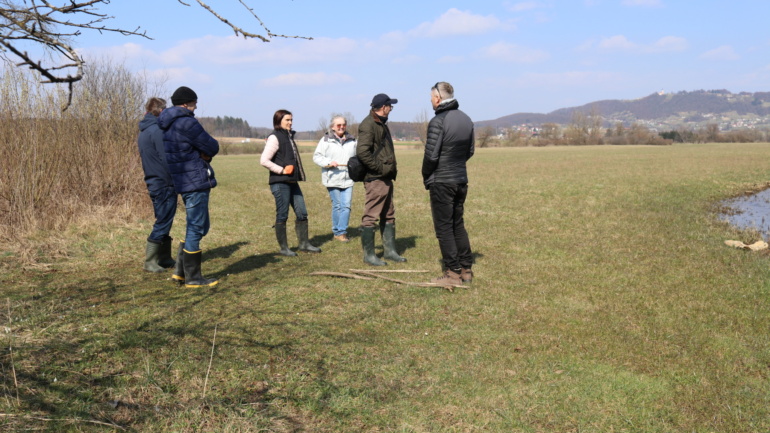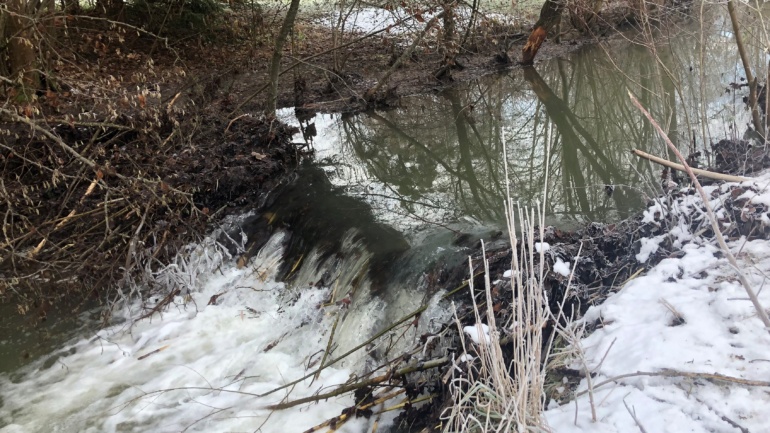The purpose of cross border cooperation between Slovenia and Hungary was to exchange best beaver management practices. First day, workshop was carried out in Hungary, where five different locations with beaver activities were visited and studied thoroughly. First location was near Hársas brook and Raba river, where several consecutive beaver dams caused flooding of adjacent agricultural fields. At the same time, beaver also caused damage to the crop, as it is regularly feeding on it. Second location was artificially constructed dam Hársas, where surrounding trees were protected from beaver gnawing. Third location was observation of a beaver dam near a main road, which was not yet in danger of being flooded, but where the water level needs to be monitored regularly. Institute Lutra suggested insertion of a beaver deceiver and offered professional guidance.
Forth location was also near a road, where beaver dug several tunnels in its vicinity, as well as started to dig under the road itself. Here, a metal mesh should be inserted perpendicularly onto the tunnels to prevent road damage. The last location in Hungary was at Sásos lake, where beaver is favoured, because his dams are collecting water and preventing the area from drying out. The area is being used by protected species such as moor frog (Rana arvalis), peat moss (Sphagnum sp.) and round-leaved sundew (Drosera rotundifolia).
On second day, we went to visit five different beaver activity sites in Slovenia. In the first three loactions we saw the beaver deceivers installed in three different areas: Predanovci (February 2024), forest area of Orlovščak (April 2023) and Hotiza (November 2023). After that, we visited a beaver conflict site, where surrounding agricultural land is flooded due to a small beaver dam and naturally marshy grassland. The Hungarian colleagues suggested, that a small ditch could be dug out to lead water into the forest, where an old dried out river bed was still present, and that could contribute to a formation of a swamp and consequent biodiversity increase. The last site we visited that day was located at the village of Mala Polana, where beaver dug several tunnels into the Črnec brook bank.
Third day workshop was also carried out in Slovenia and five locations were selected again to be visited. First site was Mura River Forest, where two oxbow lakes were studied, with beaver huts presence and the problem of tunnel digging into man-made dams discussed. Third site was also at the Mura River, where a small river meander was visited and beaver footprints were observed. At the forth site, we could see old flooded gravel pits and another oxbow lake called Nagy Parlag, where footprints of coypu and beaver were studied. At the end, we visited a site near the Kot village along the Mura River, where a beaver hut and a dam were observed. However, the dam at this site does not cause any conflict with people.
The three-day excursion was a success and very informative as we exchanged useful cross-border information and experiences on best practice management techniques. It turned out that we are dealing with similar problems, but some different approaches have been undertaken, particularly since the legislation as well as various government and non-government organisations are functioning in a different way.





